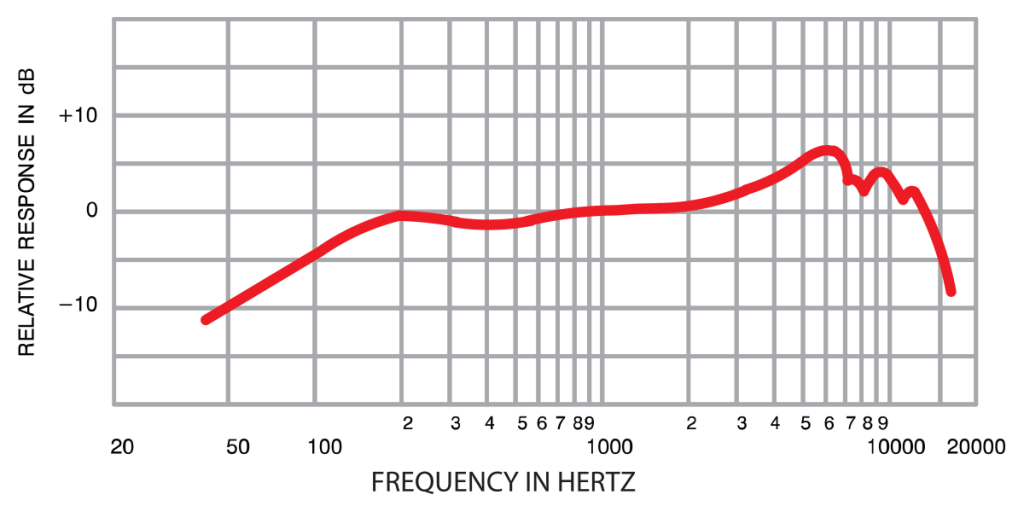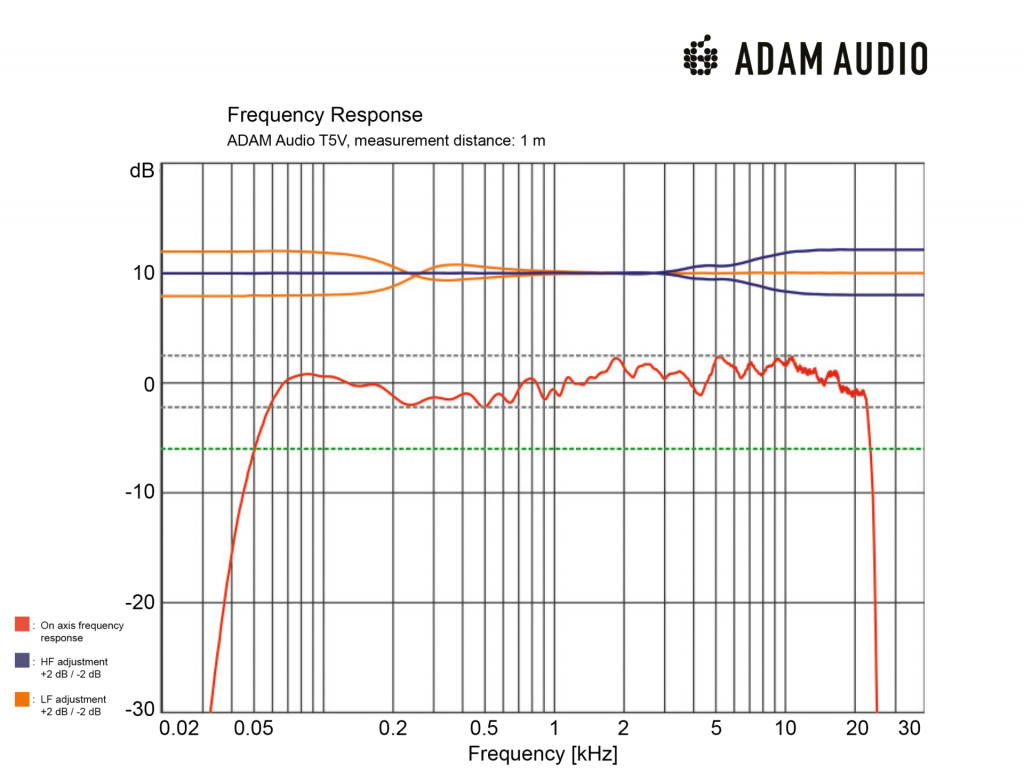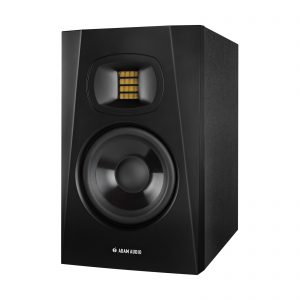So, my monitors broke (thanks Antelope). The power to my interface got cut, sending a giant spike of energy and then there was a buzz and a loss of high and low frequency information. They still sounded ok, but not like what I'd bought. Oh, and they were Adam T5Vs. Now, I could have viewed it as an opportunity to buy new monitors from a new company. There are just so many options, what's a girl to do? I had (and still have) my eyes on the Eve SC205s, but couldn't justify the price right now, seeing as how I'm spending a lot on a new mixing computer. Gotta stick with the lower ends. Did I go with a new company? Trying out different models on the unwinnable quest to find the best of the best (at least in my price range)? As you may have guessed, of course not. I got another pair of the Adam T5Vs, for the simple reason that I love them.
I'd worked on the A7X Adams a couple times, and they (and the brand) are increasingly becoming a standard of the industry. I haven't worked on them enough to be able to comment on their sonic qualities here, but they are splendid, and when I heard about (and heard) Adam's entry models, I immediately went home and ordered a pair. A couple years ago, Robert Lang Studios hosted an Adam Audio demo event. Bob had just installed a pair of S5Vs in his mix studio, and already had a pair of the S2Vs in his control room, so it would be fair to say that it's an Adam studio. The S5Vs were phenomenal. Such extended low end. We were listening to Billie Eilish specifically for that reason (and one of the guys present was obsessing over that record, not naming names, Steve). Such detail. Downstairs, though, there was another demo. Adam had just released their entry level models, so they were there to show them off. At the time there were two, the T5V and the T7V, with 5" and 7" woofers respectively. Adam later added an 8" monitor, and a 10" sub (which I also have, and will talk about later).
Now, like TVs at the electronics store, the demo was definitely set up to sell the monitors, so we didn't really get that good of an understanding of what they would sound like. There was some music, to be sure, and frequency sweeps so we could hear just how low they could go. But the high and low shelves were definitely engaged, and things were cranked to the point where all the engineers, worried about their engin-ears, asked the rep to turn it down. I listened knowing all this, but also ended up being hooked. While I knew that I wasn't getting an accurate representation, I wanted some. Maybe I did fall for the hyped audio, maybe it was the brand, but I immediately went home and ordered a pair.
The monitors themselves are gorgeous. They have the same black shell as their big sisters, as well as that trademark yellow ribbon tweeter. I hooked them up and was.... where's the low end??? That beautiful low end they were so keen to demonstrate? Oh, right, burn in. Speaker diaphragms arrive really tight from the factory, so you've gotta play sound through them for a while. I've heard anything between 8 and 100 hours. These things settle in after a couple. While I'm sure they keep settling for the whole 100, you stop noticing the difference pretty quickly. Once they had burned in, however, there was my low end! Wait, did I like it better before it got burned it?
Now's a good time to talk about frequency response charts. As the name implies, a frequency response chart is a chart that displays the frequency response of a piece of equipment. They're particularly useful when it comes to microphones and microphone selection. While knowing the sound of a microphone is the most important part, taking a look at which frequencies are boosted and which frequencies are cut can help you match microphones to sources, and pre-EQ your mix, getting a nice balance and blend before touching a knob! Here's the frequency response chart for a Shure SM57 (which you all are probably familiar with):

Look at the roll off starting at 200Hz. Look at that gradual increase at 2kHz, peaking at 6kHz. Does that look like a 57 sounds? I dunno. But what I do know is that, if I want a slight cut at 400Hz, not too much low end, and a nice boost in the upper mids, then the 57 will give me that. Monitors have frequency response charts too, but here's the thing. Unlike microphones, which we want to have an uneven frequency response to give them their characteristic sound and to help blend different sources together, we actually want monitors to be as neutral and flat as possible. Why is this? Well, we need an accurate representation of the entire frequency spectrum. That's how we get even mixes that translate to different listening environments. That's why we use room calibration software is so popular and so useful. It measures not only the frequency response of your room, but also your monitors, and creates an EQ curve that produces as flat a response as possible. Completely flat monitors are impossible. They get their sound based on the components used and the design, and even the EQ curve of your room calibration has bumps and valleys. Getting a flat frequency response is more ideal coming from the monitors, just like tonal color is more ideal coming from your microphones. EQ is accomplished using miniscule delays, which have the unfortunate result of causing phasing issues the more it's used (which is why linear phase EQs exist). Ideally, your monitors would have a flat response, so that room calibration only has to deal with room acoustics (you should also have acoustic treatment, but for us space and budget limited engineers, you do the best you can). With all that said, let's take a look at the frequency response chart for the Adam T5Vs:

That is not flat. Not even by a longshot. Assuming the grey dashed line is 3dB, there's a 6dB difference between the quietest frequency (about 250Hz) and the loudest frequency (a little over 5kHz). The upper mids and high end have the most information, with a scoop in the lower mids and a minor bump around 80Hz. It's very reminiscent of your standard smiley face curve, which is often used to finalize a mix, as well as hype up your home stereo, and that's how I'd describe these monitors: hyped. Now, maybe there's a reasonable justification. If this is how people are going to listen to it, you want to make sure that it sounds good, and also like your reference mixes. But it's not going to be accurate, and for me, an accurate sound from my monitors is what I want. And since these are meant for people without the best sound treatment in the world (if you could afford that, you can afford A7Xs), having that hype isn't going to do you much good if you pair them with room calibration software. Which you should. Because your room acoustics are going to be even more skewed than the monitors. Also, Adam says on their site that the frequency range of these monitors is between 45Hz and 25kHz, though this chart would have us believe differently, and it's coming from Adam themselves! You do get those lower frequencies, but now I have no idea whether what I'm hearing is what I'm supposed to be hearing. To sum up, these aren't accurate at all.
But accuracy of monitors doesn't really matter if you're using room calibration, like I am. What matters is how good the sound sounds, and for the price range, these sound extraordinary. I went with the 5" diaphragms for two reasons: The first is that they're better for smaller mixing environments, like a bedroom. The second is my main reason for going for them. Smaller diaphragms have a better transient response than large diaphragms, and tend to be more transparent. Think of a small diaphragm condenser vs a large diaphragm condenser. The large is vibey but not as punchy as the small, though it also picks up more low ends. We use a 57 for the punch of a snare drum, but 414s to get the full character of the drum kit. And if you use SDCs for the overheads, you get PUNCH. So, by going for the 5" diaphragms, I get more detail and a stronger transient response. And as far as how they sound, they do sound great without correction, good for casual listening, and in terms of entry level monitors, the Adam T series is going to be fighting for the top spot.
I do have some nitpicks, though. Other than the frequency response, the inputs are XLR, and since most interfaces are going to have TRS outputs for their monitors, you'll need to get TRS to XLR converters (or solder yourself up a cable). Also, they're rear ported, which means you can't really have them placed up against a wall without incurring some low end build up. While you should have your monitors at least a foot away from any walls, this isn't practical for smaller spaces, like the ones the T series is marketed to. These design issues are annoyances rather than deal breakers, but things to keep in mind. I'd looked them over before buying them, so I also had a chance to get TRS to XLR converters, but if you're not paying attention, you'll have your monitors sitting in their boxes for a few days of annoyance until you can get what you need to hook them up. Minor problems, but if you want to one, get them to work with your gear; and two, get them sounding the best that they can, keep these in mind. But also buy these monitors. Because they're great.
I was using my monitors on their own for a while, but then my mastering engineer, apparently annoyed with my low end mixing, suggested I pick up a subwoofer, so I did, and am even more happy with it than I am with the monitors. Adam also has a T series sub, called the T10S. It was specifically designed to go with the T series monitors, extends the low end down to 28Hz, and does something I hadn't expected. In addition to a bypassed setting, it has two crossover frequencies: 80Hz and 120Hz. The 120Hz is meant for small monitors, like Auratones, which have even smaller diaphragms than the T5Vs. The 80Hz is meant for the T series, so that's the one I use. This rolls off the audio under 80Hz on the monitors and above 80Hz on the subwoofer (which, while it's not indicated on their site, the frequency response chart looks like it's already doing). This has the added effect of freeing up energy for the monitors to recreate the frequencies that they do create with a much greater clarity and wow. We're back to the sound of pre-burned in, but with an extended low end frequency range, and I can say that it upped the overall quality of the monitors significantly. And I guess I also have an extra-ish octave of low end, which is cool too. I primarily do rock music, so I don't need that low end except to listen for rumble, but it's fun to have. And, again, adding in the sub drastically improved my mixes to the point where they pass the various listening environment tests within the first couple mixes. Compared to the 20+ car tests I did for my first record, that's a massive improvement. Total, you're looking at around $900 for the set (depending on tax), which is still less than if you're aiming at the X series monitors, certainly if you plan on pairing a sub with them. While I do still plan on picking up some Eve SC205s in the future, I'm probably going to hang onto this current pair of Adams for a little while longer. One, because I just bought them and I want to get some value out of them (unless they break again), but also because they sound so damn good. I guess I could hook up my old KRKs to do a comparison, but I don't want to, nor do I feel like I need to. When I first hooked them up, I was blown away. And when I got my new pair, I was equally blown away. If you're in the market for entry level monitors and are willing to go for the higher end of that tier, the Adam T series is the way to go.
If you want to buy, please use our affiliate link so we can keep bringing you sassy content 🙂

Lilian Blair is a producer, engineer, and audio educator in the Seattle area. She specializes in studio recording, mixing, and helping artist achieve their musical dreams.
-Lilian Blair
(Producer/Engineer)
www.lilianblair.com
Facebook
Instagram
Gear Fanatix




